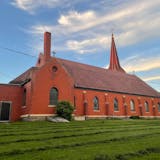Madeline Clive grabbed a whistle and flashlight as night fell on Minneapolis, stashing her pitchfork nearby, ready for hours of anxiously sitting, watching Lake Street late last week.
After arsonists burned buildings and looters hit stores in the Longfellow neighborhood during protests following the death of George Floyd, she rushed door-to-door plotting nightly patrols. A week later, she was still on alert.
"Let's protect our block," said Clive, a petite 64-year-old who's lived there for three decades. "You're under assault, but you don't know from who."
Bleary residents across Minneapolis — from Little Earth and Longfellow to the North Side — had rushed to help neighbors and formed vigilant citizen patrols to protect their homes, businesses and churches at all hours. They barricaded streets with lawn chairs, strollers and cars. They hid garbage bins from arsonists.
A week out from the height of the violence, a fragile calm is descending as neighbors exhausted from overnight vigils reach for a new normal. It doesn't take much for the adrenaline to return. A speeding truck. A car without license plates slowly rolling down the block. Cellphones snap photos and alerts go out.
But neighbors, united over phone apps and group texts in the midst of the crisis, hope to pivot this fresh neighborly energy to push for racial justice and police reform.
"There's an increased feeling of hopefulness that we will get through this, that people will recognize racial injustice," said Gary Berger, as he sat two blocks south of Lake Street in the night's stillness with a neighbor and her dog.
A few nights earlier, Berger had been stationed at the corner of his block with neighbors who erected a makeshift roundabout with traffic cones to slow traffic. They reported at least three cars without license plates to police every night, he said. But now, they're exhausted from sleepless nights and the constant threat of danger.


